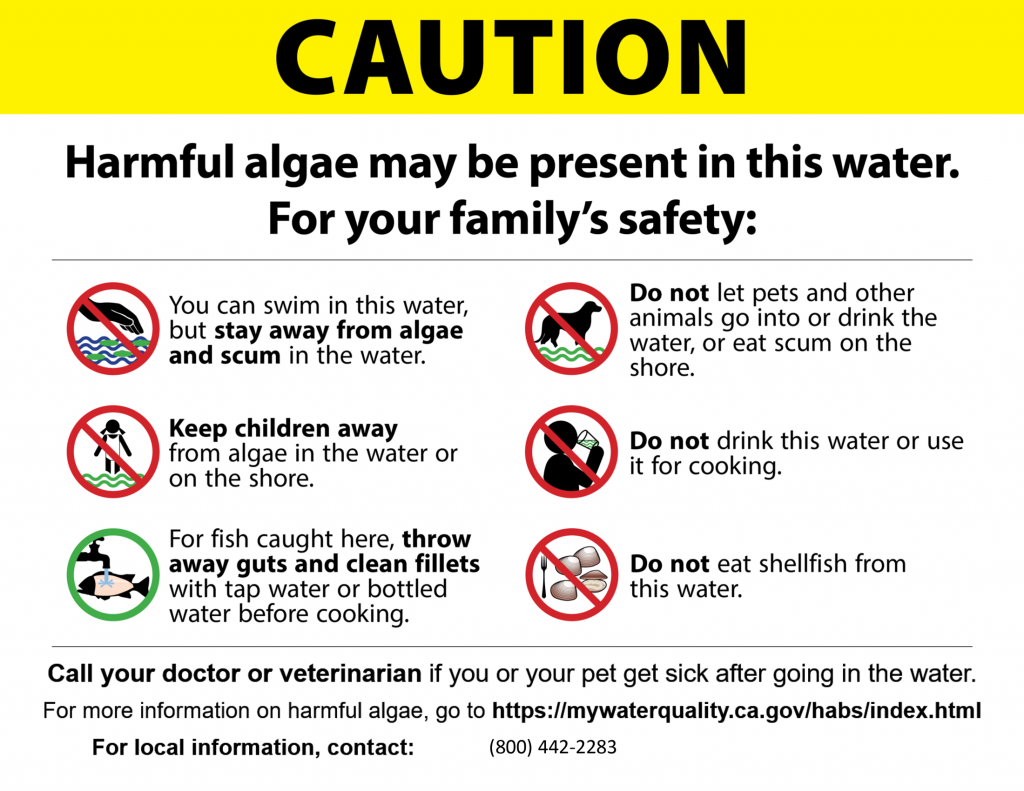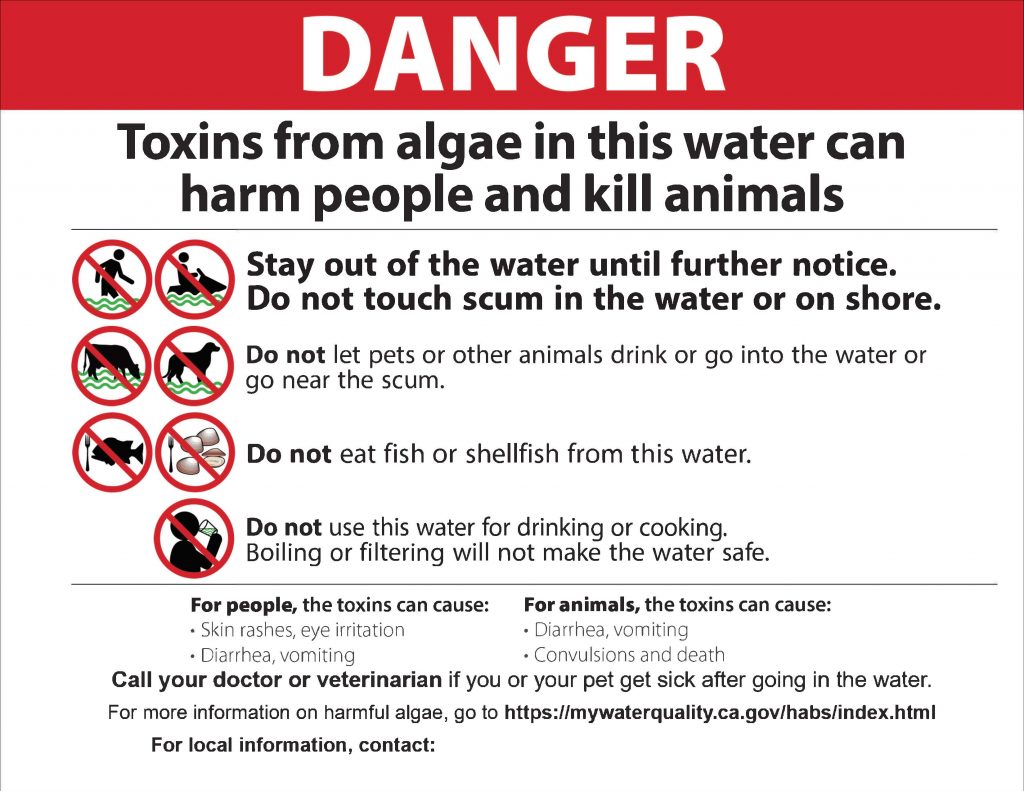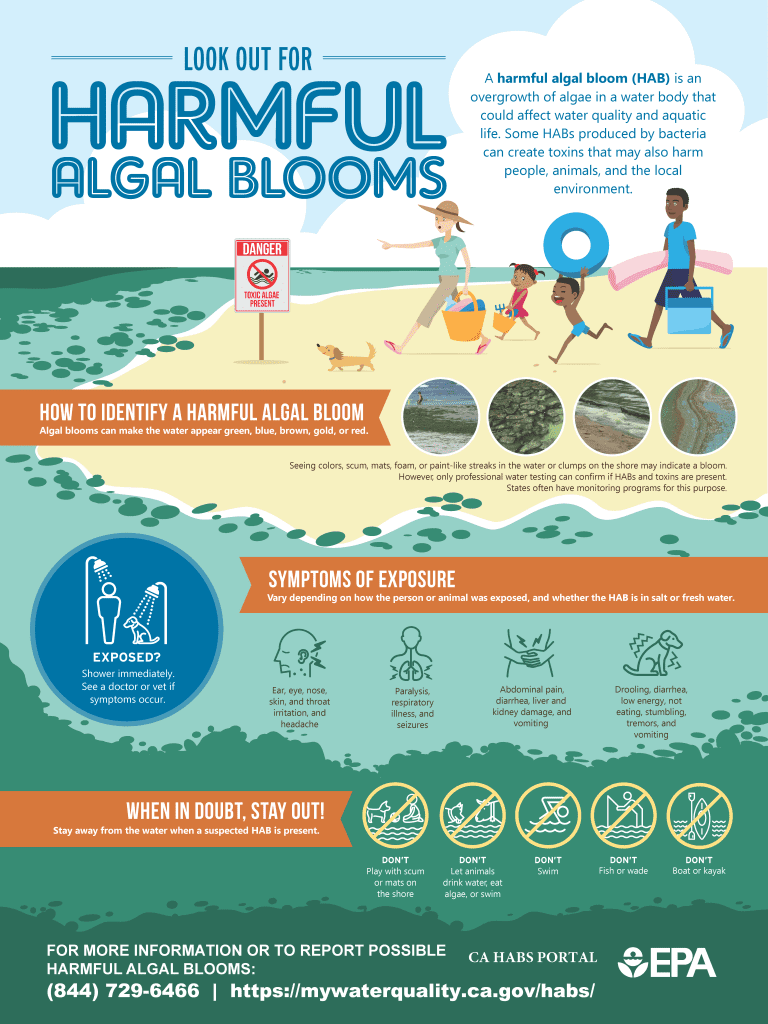About Algal Blooms
Algae and how it affects our lakes
From time-to-time, our Regional Parks’ lakes will experience Harmful Algal Blooms (HAB) that will require us to either close our lakes or post signs to notify our parks visitors and anglers about the dangers of toxins in the water. This is usually caused by continuous hot climate and weather conditions, which creates the right environment for algae, or blooms, to grow. There are three levels of warning when algae is detected: Caution, Warning and Danger. The Danger warning is the highest level, which requires the closure of the lake(s) under the reporting standards set forth by the California Water Quality Monitoring Council.
CURRENT REGIONAL PARKS LAKES AFFECTED
Updated June 24, 2024
Danger Levels
- None at this time.
Warning Levels
- None at this time.
Caution Levels
- Lake Gregory
Trigger Levels For Human and Animal Health
| Criteria * | No Advisory a | Caution (TIER 1) | Warning (TIER 2) | Danger (TIER 3) |
|---|---|---|---|---|
| Total Microcystins b | < 0.8 μg/L | 0.8 μg/L | 6 μg/L | 20 μg/L |
| Anatoxin-a | Non-detect c | Detected c | 20 μg/L | 90 μg/L |
| Cylindrospermopsin | < 1 μg/L | 1 μg/L | 4 μg/L | 17 μg/L |
| Cell Density of potential toxin producers | < 4,000 cells/mL | 4,000 cells/mL | _______ | _______ |
| Site-specific indicator(s) | No site-specific indicators present | Discoloration, scum, algal mats, soupy or paint-like appearance. Suspected illness | _______ | _______ |
a For de-posting, all criteria for no advisory must be met for a minimum of 2 weeks. General awareness sign may remain posted and healthy water habits are still recommended.
b Microcystins refers to the sum of all measured Microcystin congeners.
c Must use an analytical method that detects ≤ 1μg/L Anatoxin-a.
- A harmful algal bloom (HAB) is an overgrowth of algae in a water body that could affect water quality and aquatic life. Some HABs produced by bacteria can create toxins that may also harm people, animals and the local environment.
- Park users must review the signage and adhere to the recommendations posted around the lakes.
- Yes, we partner with the local Water Board to test lakes.
- Adults & children
- Household pets
- Livestock
- Fish & shellfish
- Skin contact
- Ingestion
- Inhalation
People
- Ear, eye, nose, skin and throat irritation and headache.
- Paralysis, respiratory illness and seizures.
- Abdominal pain, diarrhea, liver and kidney damage, and vomiting.
Pets
- Drooling, diarrhea, low energy, no eating, stumbling, tremors and vomiting.
Symptoms can vary depending on how the person or animal was exposed, and whether the HAB is in salt or fresh water.
- Shower immediately
- See a doctor or vet if symptoms occur
- Contact your poison control center for advice
- Algal blooms can make water appear green, brown, gold or red. They often produce scum, mats, foam or paint-like streaks in the water or clumps on the shore. However, only professional water testing can confirm if HABs and toxins are present. State and local governments often test water for bacteria or toxins to protect water quality as part of their water quality standards program.
- For more information or to report possible algal blooms, call 844.729.6466 or visit the California Harmful Algal Bloom (HAB) Portal at https://mywaterquality.ca.gov/habs/
- Once HABs are detected in the water, the water is tested often and must remain below the health advisory level for two full weeks before signs can be removed and advisories lifted.






